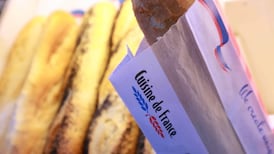Miner BHP Billiton topped market forecasts with a 31 per cent rise in first-half profit today and hinted it may launch a share buyback in August, despite giving a cautious outlook on Chinese growth.
After saving an annualised $4.9 billion in costs, cutting capital spending and trimming debt, the world’s biggest miner pointed to strong cash flows that would put it in a position to consider a big dividend hike and capital return to investors.
BHP and its rivals have been deferring projects, cost-cutting and selling assets for 18 months to satisfy shareholder demands for a bigger share of spoils from the mining boom. Rio Tinto surprised with a 15-per cent dividend hike last week.

Analysts welcomed improvements in BHP’s coal business and its previously struggling aluminium, manganese and nickel arm, and said the company should be able to fund a buyback at the end of the financial year, possibly before Rio Tinto.
“Without a doubt, there is definitely a probability that they embark on additional capital management with the FY14 result,” Deutsche Bank analyst Paul Young said.
BHP said it expected to generate strong free cash flow which would help it pare net debt to about $25 billion by June 2014, a level at which chief executive Andrew Mackenzie has said the company would be willing to look at a capital return.
“If we deliver that level of indebtedness towards the end of this financial year, I’ll come back to you at the full year with the authority of our board to talk about future capital management that may be possible,” Mr Mackenzie told reporters.
BHP shares in Australia rose 2.3 per cent to a one-year high while shares in London hit their highest intraday level in more than three months, outperforming the mining sector.
Mr Mackenzie, who took over as CEO in May last year, gave a cautious outlook, saying Chinese steel output had started slow this year at 730 million tonnes on an annualised basis and said new iron ore supply from the likes of BHP and Rio would outstrip demand growth, driving prices lower later in the year.
However, he said BHP had more room to strip out costs to insulate it from any market weakness, and highlighted that the company had been able to grow returns at a time of flat to slightly weaker commodity prices.
“We’re just getting started and I think there’s a lot more to come,” he said, without specifying any cost-cutting target beyond $5.5 billion for the year to June 2014.
Unlike its peers, the company did not give a specific target for capital expenditure beyond this financial year, when it expects to spend about $16 billion.
Mr Mackenzie said however the spend was likely to flatline for a while at about $15 billion a year.
“I wouldn’t want to be too specific on that because we are a dynamic company. Things change. We think by doing that we can operate a higher return portfolio rather than if we fix things,” Mr Mackenzie said.
Other producers such as Rio Tinto and Glencore have offered more detail to reassure investors that spending will not rise rapidly as it has done in the industry over the past few years.
Underlying attributable profit rose to $7.76 billion for the six months to December, up from $5.94 billion last time. Forecasts were $6.925 billion and analysts said BHP beat that partly on cost cutting and on a lower-than-expected tax rate. Net debt fell to $27.1 billion, down $422 million from June 30, 2013.
While some analysts suggested BHP may need to sell more assets to pay down debt, Mr Mackenzie said that was not the case.
“You can see from the strength of our cashflow that we don’t need the money,” he said, when asked whether the company expects any further major asset sales this year, after booking $2.2 billion worth of divestments in the first-half.
Profit from iron ore, its biggest business, rose 60 percent on mine expansions, while petroleum earnings fell 16 per cent, disappointing analysts, and copper rose just 0.4 percent.
Its coal business posted a profit of $510 million, up from breakeven a year earlier.
Mr Mackenzie declined to comment on speculation the company was considering exiting its thermal coal business or wanted to sell its South African coal mines.
"There is no doubt that our energy coal business in South Africa has had some challenges but the team is certainly working on that and performing well," chief financial officer Graham Kerr said in a news briefing in London.
BHP raised its interim dividend by 3.5 per cent to $0.59 a share, slightly below consensus but in line with its normal practice of paying an interim dividend at the same level as the final dividend from the year before.
– Reuters










